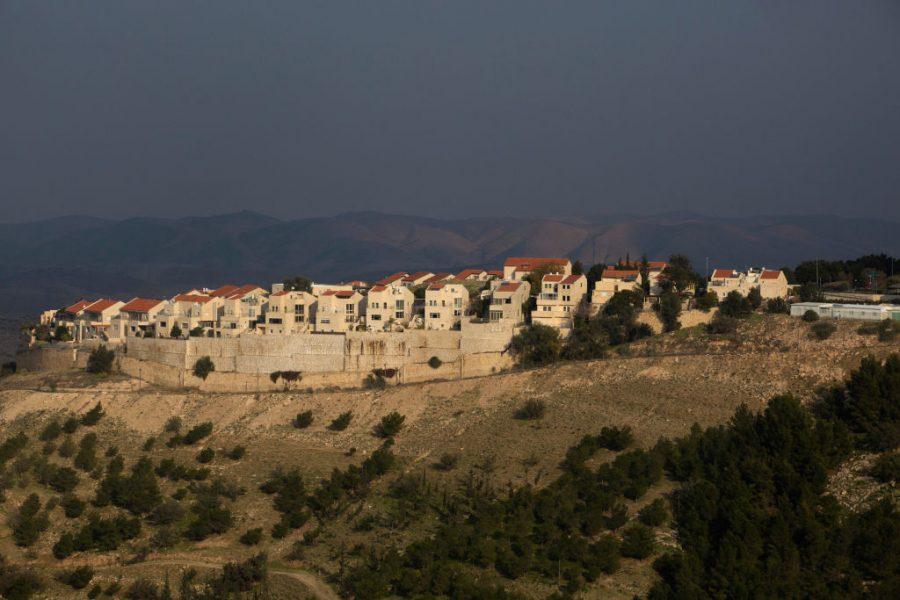
Finally, US President Donald Trump, in the presence of recently indicted Israeli Prime Minister Benjamin Netanyahu, announced his much-awaited peace plan for Israel and Palestine on Tuesday. While the details are still sketchy, enough of its contours are now available to permit an assessment. According to most knowledgeable observers of the Israeli–Palestinian conflict, the plan is an absolute non-starter and a recipe for conflict rather than peace.
While Netanyahu has enthusiastically embraced the plan, Palestinian President Mahmoud Abbas—as well as all Palestinian parties, including Hamas, the PLO, and Palestinian Islamic Jihad—anticipating what the plan would look like, rejected it even before it was formally announced.
The plan made clear that Palestinian fears were correct. It allows Israel to retain full sovereignty over Jerusalem and Jewish settlements in the West Bank, carves the future Palestinian state into several non-contiguous territories, and awards the Jordan Valley to Israel on the basis of the argument that it is essential for Israeli security.
In addition, it locates the capital of the future State of Palestine in an area adjacent to Jerusalem, not within the city, thus denying the Palestinians’ demand that East Jerusalem, with its Muslim and Christian holy sites, be recognised as the capital of their state. It also declares that Hamas must be disarmed and that Gaza and the entire future Palestinian state must be demilitarised.
While the plan states that there should be unfettered access to the Al-Aqsa mosque for Muslims, it includes the caveat that they must ‘come in peace’, a provision that would obviously be interpreted at their discretion by Israeli authorities who control access to the Noble Sanctuary. Israel may continue to deny Muslims of a certain age access to Al-Aqsa on the pretext that they are unlikely to ‘come in peace’.
Furthermore, the plan requires that both sides recognise the State of Palestine as the nation-state of the Palestinian people and the State of Israel as the nation-state of the Jewish (not Israeli) people. The Palestinians, and even a substantial section of Israelis, reject the latter claim. The only restriction it puts on Israel is that it should not build any new settlements for four years on areas that are not envisioned to be part of Israel.
The major intended impact of the plan is summed up by Jeremy Ben-Ami, the president of the liberal pro-Israeli advocacy group J Street: ‘This is really an effort to shift longstanding US policy into alignment with the hardest-right positions that Israel has ever taken on these issues.’ This is why it is music to Netanyahu’s and Likud’s ears. Among other things, it seems to be an effort on the part of Trump to ensure that Netanyahu wins the Israeli elections scheduled for March by consolidating the right-wing vote behind him.
The plan allows Israel to immediately annex all the settlements spread throughout the West Bank, in addition to the vast area of the Jordan Valley. Netanyahu declared on Tuesday that the interim government he heads would vote on this step early next week. Israel is awash with speculation that Netanyahu may annex the settlements and the Jordan Valley before the elections in March to increase his prospects for re-election.
As for the Palestinians, the Trump plan will not only validate Israel’s acquisition of a large part of the West Bank but also legitimise their long-term subjugation by the Jewish state. If ever a demilitarised and cantonised Palestinian mini-state comes into existence, it will exist at the mercy of Israel, which will control all access and dominate it economically and militarily.
This is why all Palestinian factions have rejected the plan out of hand. Israel’s efforts to implement the plan by annexing Jewish settlements and the Jordan Valley are likely to have several major repercussions. First, they may lead to the complete collapse of the Palestinian Authority, which was created as part of the Oslo Accord that the Trump plan will now supersede. With the PA removed, the Palestinian territories would return to the pre-Oslo status of occupied lands for which Israel will have to bear total responsibility under international law.
Second, implementation of the plan is likely to provoke violent reactions by Palestinians in the West Bank as well as rocket attacks from Gaza on Israel by both Hamas and Islamic Jihad. The latter could lead to Israeli incursions into Gaza on a scale not witnessed since the Israeli Operation Pillar of Defense that devastated Gaza in November 2012. Gaza, already traumatised by Israel’s economic blockade, is likely to descend into near anarchy, posing an even greater security threat to Israel.
The most important long-term consequence of the Trump plan will be the burial of the two-state solution for good. With the prospect of a real state off the table, Palestinian opinion, which was already veering towards a one-state solution, will overwhelmingly prefer such an outcome to the cadaver of a fictitious, non-contiguous state offered to them. This, in turn, is likely to pose an existential dilemma for Israeli Jews because they will be forced to starkly confront the question of whether they would like to live in a bi-national democratic state or a polity based on apartheid where a dominant race will continue to subjugate another. The Trump plan may, therefore, inadvertently become the harbinger of a single state between the Jordan River and the Mediterranean Sea.